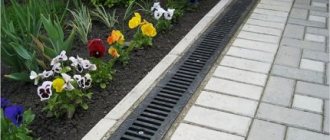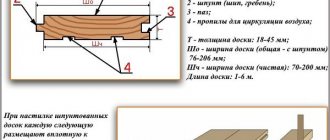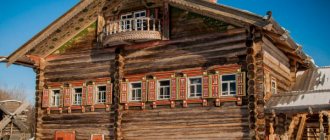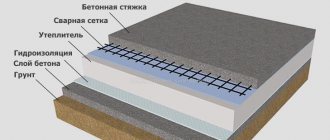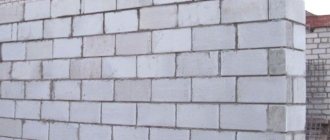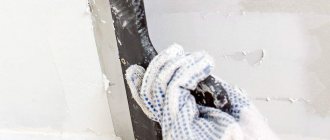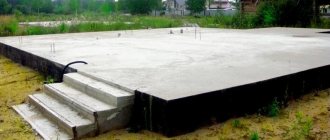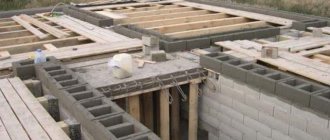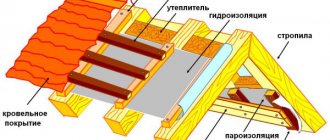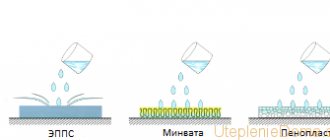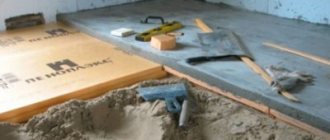The floor is one of the basic elements of the room, which means you need to choose and care for it as carefully as possible. Currently, wooden floors are especially popular, as building materials of natural origin have become fashionable. However, wooden coverings can deteriorate under aggressive environmental influences. You can preserve your floors using ordinary paint. But you need to choose it, taking into account the characteristics of the floor covering.
How to paint a wooden floor in a house?
Painting a wooden floor
Wood is a natural material that can quickly deteriorate without special protection. It follows from this that the main function of the floor covering is to protect it from rot, high humidity, mildew and mold. But this may not be enough. The decor of the house, including the flooring, should please the owners so that they enjoy spending time in it.
Important! If we are talking about a dacha, then today it is rare for anyone to store unnecessary rubbish there, which has no place in city apartments. Now, decorating a country house is a separate area of design, and therefore purchasing floor paint requires an individual approach.
There are many reasons to use paint:
- the paint does not allow the wood to absorb moisture or dry out;
- painted floors are not exposed to fungus or mold, and this increases their service life;
- painted floors do not require additional care - they are often simply enough to be washed;
- paint protects the material from temperature fluctuations;
- Thanks to paint and varnish products, you can easily create a beautiful and unique pattern.
Painting a wood floor is very important to protect it from moisture, mold and mildew.
Materials for painting wood floors
Before painting, the floorboards must be prepared, and this will require various materials, and first of all putty.
Putty is necessary for sealing cracks and crevices that exist in both the old and newly laid new floors. How to putty a plank floor? There are two types of putty for wooden floors:
- Oily. Its main advantage is reliability and a very long service life. However, the oil composition also has a drawback - it takes a long time to dry.
- Acrylic. After drying, the putty remains elastic and does not form cracks. The product can be used not only to fill cracks, it is also suitable for leveling the floor for painting if it has small depressions.
Before painting the floor, it also needs to be primed. The primer promotes better adhesion of paint to the wooden floor and provides protection against the appearance of unwanted inhabitants: microorganisms and insects. If a plywood floor requires painting, then in order to avoid the formation of mold on it, as well as to protect it from temperature changes, it must be treated with drying oil.
Features of the use of floor coverings
When repairing a wooden floor, use one of two possible ways to update it. There is nothing complicated in the first method: first you need to choose a composition that is similar to the previous one, and then apply it to the coating. Using this method, you can avoid disturbing the layer of previous paint.
The second method is much more labor-intensive, as it requires impregnation and varnishing of the floor. But this option is much more effective, since it involves not only painting, but also restoration of the coating itself.
Important! To put the floor in order using the second method, you need to prepare the floor surface for restoration. To do this, it is smoothed and polished, and sometimes even completely changed.
You can apply paint to the old layer, or you can completely renew the surface of the wooden floor.
The preparation should be secured with several layers of clear varnish. This will give the surface strength and immunity to external adverse events.
If it is necessary to increase the service life of the floor, it is recommended to replace the old boards with fresh ones and cover them with paint and varnish products. True, with this option a lot of impregnation and varnish are consumed, because new boards absorb a lot of liquid.
Old floors
Old Wood Floors
If you have old wood floors in your room, they've probably been painted a few times already. And therefore, it is worth focusing on the following points:
Coating an old wood floor
with the existing color (painting over a dark shade with a lighter shade may require more than 2 coats of paint);- type of previously used paint (if you can’t remember what you used to paint the last time, rummage through your “stocks” of materials on the balcony or storage room, because as practice shows, a paint jar is often not thrown away, and there is always some paint left in it) ;
- your financial capabilities and the availability of suitable paint in the store.
Alternatively, you can try to completely remove the old paint, scrape the floors and varnish them. However, if the boards have deteriorated during their “service” (they have become either “humpbacked” or, conversely, concave), not a single craftsman will undertake sanding.
The problem will be the presence of nails hammered into the boards from above and hiding under a layer of old paint (this is how floors in public buildings, for example, in schools, were usually “repaired”). In such cases, it is better to think about completely replacing the old wooden floor with a more modern covering.
But parquet (almost all of it is made of oak), even old ones, is much easier to peel off. All that remains is to then coat the surface in two layers of varnish (with or without tint) over the primer.
Video
The full range of parquet repair works:
Choosing paint for a wooden floor
Some people believe that wooden floors are an indispensable attribute of the old days. But this opinion is erroneous, since floors made from natural materials are often used even now to create a pleasant atmosphere and make the room more attractive.
Only with the help of proper floor painting can you achieve the best quality of the floor structure. This does not require special knowledge or skills. All stages of the procedure can be performed by yourself.
It is quite possible to paint the floor yourself - the main thing is to follow the technology
Before you start painting, you need to consider the following points:
- Is the flooring quality?
- what the final appearance of the floor should be after painting;
- what material is best to use in a given situation;
- How long does it take for paint to dry?
Ultimately, you need to have a complete vision of what should happen in the end, and based on this, make a choice in favor of one of the materials.
It would be useful to first familiarize yourself with the types of materials in order to have an idea of what to apply to the flooring so that it gives maximum benefit. Transparent products, such as various varnishes and impregnations, allow you to emphasize the natural texture of wood, but do not provide adequate protection from any loads.
You can use only varnish without applying paint - this will add beauty to the wood, but will not protect it adequately
You cannot move heavy objects or walk in heels on such a coating, as this will damage the protective layer, which will not be able to protect the tree from negative influences in the future.
When painting floors, you can forget about the natural beauty of wood, but in return you get a variety of colors that are obtained by choosing the right materials. In addition, the paint helps strengthen the coating.
Important! When choosing paint, it is important to consider the humidity in the room. By the way, in any case, you need to apply a protective layer only to a previously prepared floor.
The coating should be applied taking into account the selected materials in this way.
- Varnish. One layer of varnish is applied to the previously prepared coating. After it dries, the surface is leveled with fine sandpaper and cleaned. Then, using the same principle, a couple more layers are applied, but not less than three.
- Dye. Drying oil is first applied to the boards. After hardening (after 3 days), the floor is painted 2 times. Once the paint has dried, you can safely move around it.
Several layers of paint are required
When re-treating the floor, you need to take into account the degree of preservation of the coating. In a situation where the quality of the floor is called into question, it is worth re-laying the entire floor again. This will save you from problems.
Lucky
You can paint a wooden floor with two types of compounds: transparent and opaque. The first include varnishes. The resulting coating does not hide the wood texture. Opaque are various paints: oil, acrylic, enamel and others.
Transparent compounds are used in cases where they want to preserve a beautiful wood pattern. They are produced on a water and organic basis.
The former are non-toxic, so they are often used for interior decoration, including painting the floor in a nursery. They do not have a strong odor, and after application they dry within a day. A serious disadvantage of water-based varnishes is their fragility. The coating requires updating after 2-3 years. It should also be taken into account that they can only be applied with a roller; using a spray gun or brush it will not be possible to achieve an even layer.
Varnishes with organic solvents form a durable, relatively durable coating that is resistant to mechanical damage and abrasion. However, they are toxic and have a pungent odor that can last from several days after application to several months (the latter applies to acid-curing varnishes).
Please note that before applying the transparent composition, careful preparation of the wooden floor is necessary: you will need to remove all imperfections and level the surface.
What to look for when purchasing?
Despite the fact that paint is one of the most popular materials for flooring, it must be chosen very carefully, because the floor should serve not only for protection, but also for decoration. Well-chosen paint can not only improve the quality of the coating, but also emphasize its appearance and structure. When purchasing, you need to consider the following points.
- Variety of varieties and types of wood. Because each type of wood reacts differently to paint, the amount of material required for painting varies.
- Conditions for using paint. Different paints are used to paint the floors inside and outside the building.
- Terms of use. Finishing materials can be used to cover both fresh boards and newly repaired ones.
When choosing paint for the floor, you need to pay attention to many nuances - Quantity and composition of old finishing. Such information is required in order to select a product that can be combined with the previous one.
- Coverage quality. In some cases, pre-treatment of the wood may be required.
All these factors should help determine which paint to choose from the huge selection.
Colorful palette - what to choose
The range of paints and varnishes presented in the retail chain is distinguished by an almost unlimited range of color solutions. It is difficult for an unprepared buyer to navigate the palette of wood finishing products.
When deciding what color to paint the floor, you can focus on the classic options, which include the following colors:
- brown;
- beige;
- green;
- blue;
- orange.
If you deviate from the standards, then the following solutions will look unusual and original:
- black;
- white;
- yellow;
- red.
If the room consists of several zones, then they can be distinguished by using two types of coating with different colors.
Dispersion acrylic paint
Water-based acrylic paint belongs to the category of environmentally friendly finishing materials for interior use.
The advantages of the material are as follows:
- ease of application;
- color saturation;
- hydrophobicity;
- resistance to abrasion, ultraviolet radiation and detergents;
- affordable price.
This type of coating protects wood from dampness and prevents the formation of mold and mildew.
Oil base
Oil paint is a classic in painting. The inexpensive material has a wide range of applications for both interior and exterior work. After drying, it forms a durable shiny coating that protects the base from moisture and ultraviolet radiation. Oil-based products have more disadvantages than advantages.
These include:
- unpleasant odor;
- long drying time;
- cracks appear due to drying out.
Today this material is practically not used, because it has a short service life.
Wear-resistant paint
Wear-resistant paint for wooden floors is made on the basis of acrylic or polyurethane. These substances permeate the base throughout the entire volume, ensuring its resistance to dampness, fungus and insects.
The polymer coating retains its shape and does not deform under the influence of temperature changes and moisture. The surface film is highly durable.
The color of the coating does not fade under the influence of detergents, abrasion and solar radiation. It easily removes shoe marks, grease stains and other contaminants. Wear-resistant compounds are also used for painting open structures: verandas, terraces, gazebos.
Rubber compound
Rubber floor paint is used to treat high traffic areas, such as living rooms, corridors and verandas. Water-based formulations are made with the addition of polymer additives, which give the product high performance characteristics. After application, the paint forms a dense matte film on the base.
The material has the following advantages:
- elasticity;
- environmental Safety;
- chemical and biological inertness;
- waterproof;
- abrasion resistance;
- no odor;
- durability.
The coating is non-slip and has a deep and rich color.
Paint selection
If you choose the right paint, you can not only decorate your wooden floor beautifully, but also preserve it for a long time. It is very important to pay attention to the following details before purchasing.
- What paint was used previously? For example, a coating that can withstand sub-zero temperatures is suitable for a balcony. For rooms with high humidity it is better to use moisture-resistant coatings.
- Interior decoration. The paint color should match the overall design. Currently, the choice of colors is so diverse that there should not be any problems with this. If there are any doubts, you can opt for white, which is considered universal.
It is important that the color of the floor paint matches the overall design of the room - Wood species and texture. The surface of the pine flooring is quite soft and flexible, so it needs additional protection and strength. For it you need to choose a paint with these properties. Beech flooring has a glossy sheen and a non-standard texture, which means it is worth using coatings that can highlight this. You can also apply oil impregnation to the beech surface before painting - this will preserve the properties of the wood.
- Type and characteristics. Transparent products, such as impregnation or varnish, do not allow oxygen to pass through well, and their layer becomes thinner over time. However, they enhance the shine of surfaces and protect them from solar radiation. But they need to be applied to an already painted surface.
When choosing paint, you need to consider what kind of coating it will be applied to - for example, different materials are suitable for pine and beech floors
When the choice is made and the paint is purchased, you can begin preparatory activities.
White floor
White wood floor
The white wooden floor looks very original. To get this result you need:
- carefully sand the new coating, which has not previously been covered with either varnish or paint;
- if defects (dents) are revealed, fill them with a special putty (in the store, when purchasing it, check whether it is tinted with colored oil and wax, or buy white putty straight away);
- cover the surface with white oil and hard wax (to do this, use a brush, after thoroughly mixing the composition in the jar);
Coating the board with white oil
- After 15-20 minutes, use a soft rag (cloth) to remove the composition that has not been absorbed into the wood;
- a day later, apply a second layer of white oil with hard wax in the same way.
Preparing for painting
The preparatory stage includes several stages:
- preparation of a wooden surface, primer;
- painting.
To prepare the work surface, you need to do the following.
- Clear the room of furniture and equipment and wash the floor. To do this, it is better to use soapy water, especially if there is severe contamination.
- The surface must be cleared of debris and remnants of old paint. If there are cracks and roughness, they can be removed using grinding equipment.
- Gaps and cracks must be filled with putty or other suitable solution. Usually it is necessary to put several such layers. In this case, each subsequent layer must be applied only after the previous one has dried.
- Re-sanding. When the solution dries, its surface needs to be smoothed.
- Next, they are treated with a primer, the properties of which correspond to the selected paint.
It is necessary to prepare the floor for painting - free it from debris, old coating, seal cracks and cracks
At this point, the preliminary preparations are considered complete, and then you can begin painting.
wood putty
Treating the floor before painting is the basis for a quality coating
Surface preparation is carried out in two stages. The first is to clean the board from the previous layer of paint and varnish materials. Here it is important to make the wood smooth, removing even small grains.
Removing old paint and leveling the floor
Treating old parquet before varnishing
Leveling a wooden floor
If cracks, nicks or chips have formed on the floor surface during use, they should be thoroughly rubbed and cleaned. Large cracks must be sealed with putty followed by grouting to make the surface smooth.
When treating wood before painting, in addition to the primer, it is advisable to apply an insecticidal or antiseptic impregnation - these are special compounds that protect the wood from fungi, mold and small pests.
At the second stage, the floor is washed well, removing dirt and dust, and left to dry (at least 2-3 hours are allowed for drying). Subsequently, the dry, clean and smooth floor is treated with a primer - this reduces the consumption of paint and varnish material, and it becomes easier to apply paint (adhesion to the board is enhanced).
Choose your primer mixture carefully – it should be compatible with the type of paintwork. Read the instructions on the package or ask the seller for advice on compatibility of ingredients.
Fire retardant primer
Just a primer for wood
Universal primer for wood
The approach to treating the floor is somewhat different if the plans include a varnish coating. Here it is necessary to polish the surface of the boards as efficiently as possible, achieving ideal smoothness. Afterwards, the boards are primed, moving along the grain of the wood, and proceed to applying varnish.
Coloring
To start painting, you need to wait until the floor is completely dry after priming. After this, the painting area should be marked with paper or masking tape.
Different paints have their own painting technology. To paint the floor with a roller, the paint is first mixed and poured into a special tray. After this, the roller is dipped into the tray and the surface is painted. It is better to start from the far corners of the room. Before working with a roller, all hard-to-reach places, as well as baseboards, must be painted with brushes of different widths.
Important! To properly paint wood, paint is often applied with a spray.
The technique of painting with rubber paint requires special attention, as it must be performed in accordance with the rules:
- First, the paint must be mixed, and if necessary, add water;
- for application you can use either a roller, a brush or even a spray;
- during painting, the temperature in the room should not be lower than +5 degrees;
- During the painting process, the paint must be stirred so that it does not have time to harden;
- You only need to paint a dry and clean surface;
- Regardless of what kind of paint is used, after complete drying the painted surface should be washed with warm water.
If painting is done in several layers, you need to wait until the previous one dries before applying the next one.
Painting is a labor-intensive task, so the whole process needs to be thought out in advance and careful preparation carried out.
The order of preparatory work before painting
The quality of painting depends not so much on the chosen material, but on the correct preparation of the base and application of the material.
Depending on the repair conditions, the preparatory work algorithm may be as follows:
- Drawing up a sketch. Choice of color and pattern.
- Perform calculations. Determining the amount of necessary materials, fixtures and tools.
- Purchasing everything needed for repairs.
- Cleaning the floor from old finishes (if this technology is chosen).
- Leveling the surface. Seal large holes and cracks.
- Applying a primer (only on cleaned wood).
- Application of paint and varnish material to the surface.
At the end of the work, it is advisable to wipe the coating with a soapy solution and vinegar to remove any remaining oil from the surface.
What tools will you need?
Before starting work, you need to prepare everything you need so as not to be distracted during the repair process.
The following tools and materials will be required:
- Roller with telescopic handle. Depending on the chosen composition, a foam or fur nozzle is used.
- Brush. You can’t do without it when processing baseboards and internal corners.
- Paint brush with natural bristles. Used for painting bases with a textured surface.
- Putty knife. Necessary for removing old coating, sagging and filling irregularities.
- Paint bath. Needed to load paint regardless of whether a roller or brush is used.
- Masking tape for protecting walls and trim, drawing demarcation lines.
- Solvents for diluting thick liquids, removing splashes from walls, clothing and hands.
- Rubber gloves and assembly glasses.
To apply alkyd compounds, you can use a spray gun.
Treating floors with a primer before painting
If the old paint has become unusable, then there is no point in wasting time and effort on leveling it.
You can remove the old coating in the following ways:
- spatula;
- plane;
- grinding machine;
- blowtorch;
- factory-made remover.
After cleaning, the base must be leveled. The protruding parts are ground down with sandpaper by hand or with a belt machine. Then you need to putty the cracks, holes, chips, cracks and other surface defects. This is done with a wood compound and a spatula. It is advisable to use a solution whose color is the same as the base. After drying, the grout must be sanded and polished. Then the surface is cleaned of crumbs and dust.
The floor to be painted must be treated with a primer to clog the pores in it and strengthen the top layer. This will increase surface adhesion, facilitate application and reduce material consumption. The primer can be applied with a brush or roller. After the first layer has dried, the procedure should be repeated.
Recommendations
To paint your floors perfectly, you need to take into account the following points:
- For painting you need to prepare spare working tools or materials. Rollers and brushes should be of different lengths, widths and shapes;
- You should only purchase paints from well-known brands after familiarizing yourself with the composition and accompanying documentation;
- the type of paint should be selected taking into account the texture, species and texture of the wood;
- When painting residential premises, you need to choose paint that is odorless and has no toxic inclusions.
Important! Paint and varnish products intended for wood processing can provide the necessary care and protection, and they are varied in appearance and color.
Before you start painting the floor, it is better to prepare several rollers and brushes of different lengths, widths and shapes
Self-coloring mistakes
Beginner home craftsmen make the following mistakes when painting wooden flooring:
- do not pre-level the base;
- mix each new portion of different colors in the tray;
- do not prime the wood;
- they forget to cover the walls, trim and radiators with masking tape;
- use low quality brushes;
- cover the floor with one layer of paint;
- combine materials of different composition;
- work indoors without ventilation.
To avoid such mistakes, you need to carefully study the instructions for using paints and varnishes.
Popular brands
Since paints are one of the most popular products on the construction market, many companies are involved in the production of this product. Of all this variety, the following popular brands are worth noting.
| Firm | Description |
| This brand is an indicator of high quality. It is produced by a Finnish company whose products are in great demand in this market. For flooring, paints from the Betolux series are best suited. |
| Despite the fact that the paints of this company are of high quality, it is still inferior to the manufacturer described above. |
| Products of Turkish origin belong to the middle price segment and are suitable for solving ordinary problems. |
There are, of course, a lot of other paint manufacturers: “Knauf”, “Soudal”, “Ceresit” and so on. All products from these companies are quite popular, differing only in quality, composition, and method of application.
How to paint the floor
If all the tools and materials are ready, then you can proceed directly to painting the floor. Below are step-by-step instructions for this process, following which will not only speed up the work, but also prevent the occurrence of common errors.
Step 1 . Clean the floor surface from dust and dirt, paying special attention to the cracks between the floorboards. Insufficient cleaning may cause the paint on the brush to mix with remaining dust and spread across the floor surface.
Clean the floor surface
Gaps in the wooden floor
Step 2 . If dry cleaning of the floor is not enough, wash it thoroughly with plain water (maybe with the addition of detergent). Wait until the floors are completely dry.
Do a wet cleaning
Step 3 . Open the paint can and add a small amount of thinner. This will allow you to increase the amount of paint, and it will be difficult to work with a thick composition, so you can’t do without a solvent.
Thin the paint with solvent
Step 4 . Stir the paint thoroughly until a homogeneous substance is obtained. You need to stir until the colors and stains disappear. An ordinary wooden stick is suitable for mixing.
Stir the paint
Step 5 . Apply masking tape to the walls around the entire perimeter of the room to protect them from paint getting in during the process. The same must be done with stationary furniture, if any.
Apply masking tape around the perimeter
Note! Painting tape is impervious to all types of paint, so you don’t have to worry about the appearance of walls and furniture. In addition, it is very easy to remove after use, and no marks remain on the surface after the tape.
Step 6 . Pour some thinned and mixed paint into the deep part of the paint tray. You should not add a lot of paint, as this may complicate further work.
Pour some paint into a special tray
Step 7 . Using a small brush, carefully go around the perimeter of the room, painting all the baseboards. To prevent paint from dripping onto the floor while painting, press the brush against the ribbed surface of the paint tray each time you dip it in paint.
Paint the baseboards indoors
Step 8 . Paint the rest of the floor using a large brush, carefully spreading the paint over the surface of the floorboards. You can also use a roller instead of a brush. During painting, it is advisable to lightly press the roller against the floor so that the paint gets into all the existing recesses (see How to seal cracks in the floor) and fills them safely.
Paint the entire floor with a roller or wide brush.
Pay attention to every floorboard
Step 9 . Start painting the floor from the far wall of the room and smoothly move towards the exit.
You need to start painting from the far wall
Step 10 . The work of painting the wooden floor is finished. Now you can enjoy the finished result.
The floor is completely painted!
For the floor to dry completely, you need to wait a few days (if it’s warm outside, the paint will dry in a day). After drying, the floors must be washed with a solution of water and a small amount of vinegar. Only then paint the room again, applying a second coat of paint. This kind of washing significantly speeds up the drying process of the paint, and with the help of vinegar, all traces of oil are removed from the surface.
Clean the floor with vinegar and water
Similar products for covering wooden floors
To preserve the natural pattern of a wooden floor covering, you need to select transparent products:
- oils;
- impregnation;
- varnishes.
Using varnish you can provide reliable coverage for a long time. It forms a hard protective shell that preserves both the color and texture of the wood. Mastic was always used for varnishing and polishing oak parquet. This product is great for hard wood. But for soft varieties, such as pine, it is better to use a plastic transparent composition. Otherwise, after some time you may find cracks or dents on the floor.
To preserve the natural color of wood, you can use varnishes
Wooden flooring, assembled from inexpensive softwood, is treated with special products that contain pigments that enhance the natural texture and color of the wood. Biological compounds do not pose a danger to people, and they also have fire retardant properties. Surfaces treated with this composition do not rot for a long time and do not suffer from pests and fires.
Oil impregnations are compounds made on the basis of natural ingredients: natural resin, wood or linseed oil. With their help, you can protect and tint the coating, increase its wear resistance. Oil is much more plastic than varnish - this allows the product to be absorbed into the deeper layers and make them stronger.
Important! Impregnations should be used to treat high traffic areas.
Oil impregnations are best suited for unheated rooms. Therefore, they can be used to paint floors on the veranda or terrace. The same composition is good for use in rooms with high humidity. This will make the wood water-repellent and protect it from mold.
Oil impregnations can be used
To protect wood from fungus, mold and insects, it is treated with antiseptics. They can also be used at home by surface spraying. For deep impregnation, production conditions are required. In specialized markets you can purchase treated wood for flooring.
Types of paint - which one to choose?
There are two main types of coatings - paints and varnishes, so you first need to decide on this category.
What is the difference:
- Transparent mixtures - varnishes. They have qualitatively different compositions, but perform a common task: varnish for a wooden floor forms a transparent film on the surface that serves as protection from external influences. Does not paint over the wood, preserving its color and texture.
- Coloring mixtures are different types of paints. They are selected for a specific purpose depending on the composition. Floor paints form a dense film on the board, which completely colors the wood in the chosen color.
Choose high-quality compositions, since saving on a coating that will constantly be exposed to external influences (starting with walking, ending with washing), will quite quickly lead to another cost - to bring the wooden floor into proper shape.
Which varnish to choose for a wooden floor
If the treatment of a wooden floor is planned for well-heated rooms (all year round), a water-based coating is suitable for interior work. This varnish is easy to apply to wood, but, most importantly, it has no unpleasant odor. An excellent option for cottages and summer houses, the premises of which do not suffer from temperature changes and high humidity.
In other cases, it is better to give preference to compositions for external use. Such varnishes have strong protective properties that will protect wood in cold and damp conditions. Thanks to the durable film that forms on top of the board, the floor covering will last longer than its water-based counterparts.
There is another type of colorless floor covering that is not related to varnish - this is oil. The modern mixture allows you to protect the board without changing the color and enhances the texture. Oil is good for treating parquet floors or hardwood flooring boards. However, this is still not paint.
What paint to choose for a wooden floor
Unlike varnishes, the range of paints is much wider. Here you can choose the optimal combination of coatings that will last a long time and at the same time maintain its effectiveness.
Types of paints depending on composition:
- Oily . A classic from yesteryear, it is rarely used today. The mixture takes a long time to dry (5+ hours) and spreads a pungent odor throughout the house. It cracks relatively quickly, starting to fly around (especially in conditions of unstable air temperature).
- Acrylic floor paint . One of the safest and most durable options. It is produced on a water basis, so its key purpose is interior work. The paint does not create a strong unpleasant odor. Resistant to abrasion and fading, creates a good protective coating for the board.
- Enamel and alkyd paint . They have a pungent odor, but are the cheapest way to paint the floor in an apartment or private house. Creates a strong, durable coating.
- Polyurethane . It is characterized by the durability of the coating and is resistant to deformation. Lasts up to several years without becoming covered with small cracks. It is most often used for painting outdoor spaces (gazebos, verandas, etc.).
- Rubber floor paint for wood. A relatively new type of coating containing a large number of rubber polymers. On the surface it creates a dense latex coating in matte colors. Visually resembles rubber and perfectly protects the board. Abrasion resistant and non-slip.
Rubber floor paint “SuperDekor”
Floor paint intended for exterior use can also be used for interior use. This will allow you to forget about painting for several years, due to the strong components in the mixture that will preserve the integrity of the wood and visual appeal.
On the contrary, paint intended for indoor use is impractical to use outdoors. Improper use will soon render the coating unusable (especially water-based compounds).
To paint a garage or facade, take a closer look at universal compositions, or choose paints exclusively for exterior work. They are highly wear-resistant, so they can easily withstand frost, abundant summer rainfall or scorching sun.
Give preference to paints containing polyurethane - it makes the coating durable and is suitable for use in rooms with high humidity.
When choosing what to paint a wooden floor in an apartment or a veranda in a country house, do not forget about the fading of the coatings. For example, varnish will retain its decent appearance for an average of 2 years with constant exposure to direct sunlight. The paint (depending on the type) will last about 7–10 years.
Paint or varnish, which is better for wood?
When choosing what to cover a wooden floor in your dacha with, paint or varnish, you must take into account that varnish coatings are more difficult to use than paint. Only perfectly processed, sanded floors can be coated with varnish.
Varnishing is applied only to a flat floor surface
Another question is how to paint a wooden floor in an unheated dacha in cold weather. If the dacha is not heated and is practically never visited in winter, then under the influence of low temperatures the varnish may crack and fly off. Therefore, for a wooden floor in a country house, varnish is not always functional. If you absolutely want to varnish your floors, take a closer look at compositions for exterior use. They are more heat- and wear-resistant, but the price of such varnish will be higher.
Paint for a wooden floor in a country house allows you to get the desired shade of the coating, retains its decorative and protective properties for a long time, allows you to hide possible defects, and is usually quite affordable in price.
